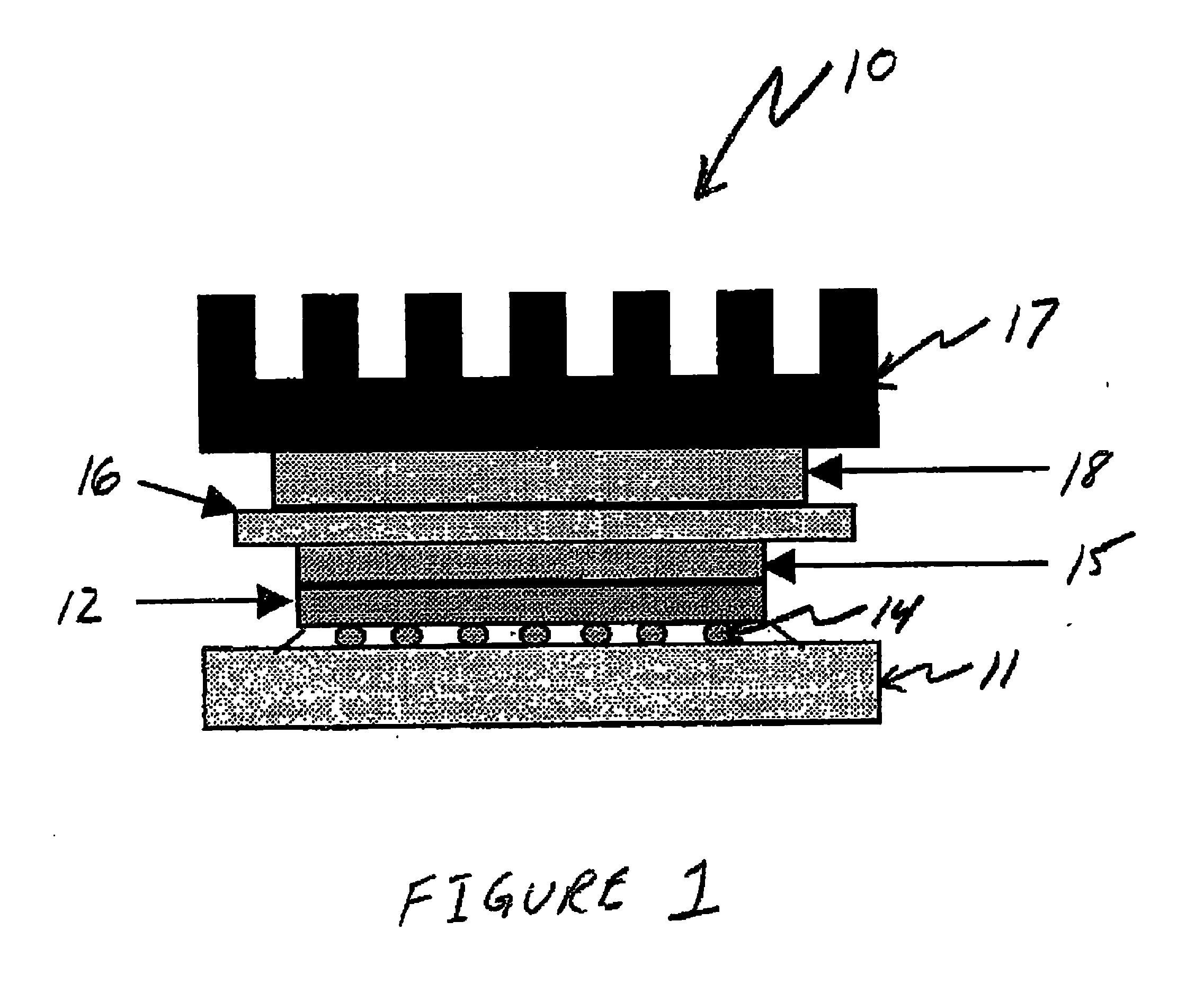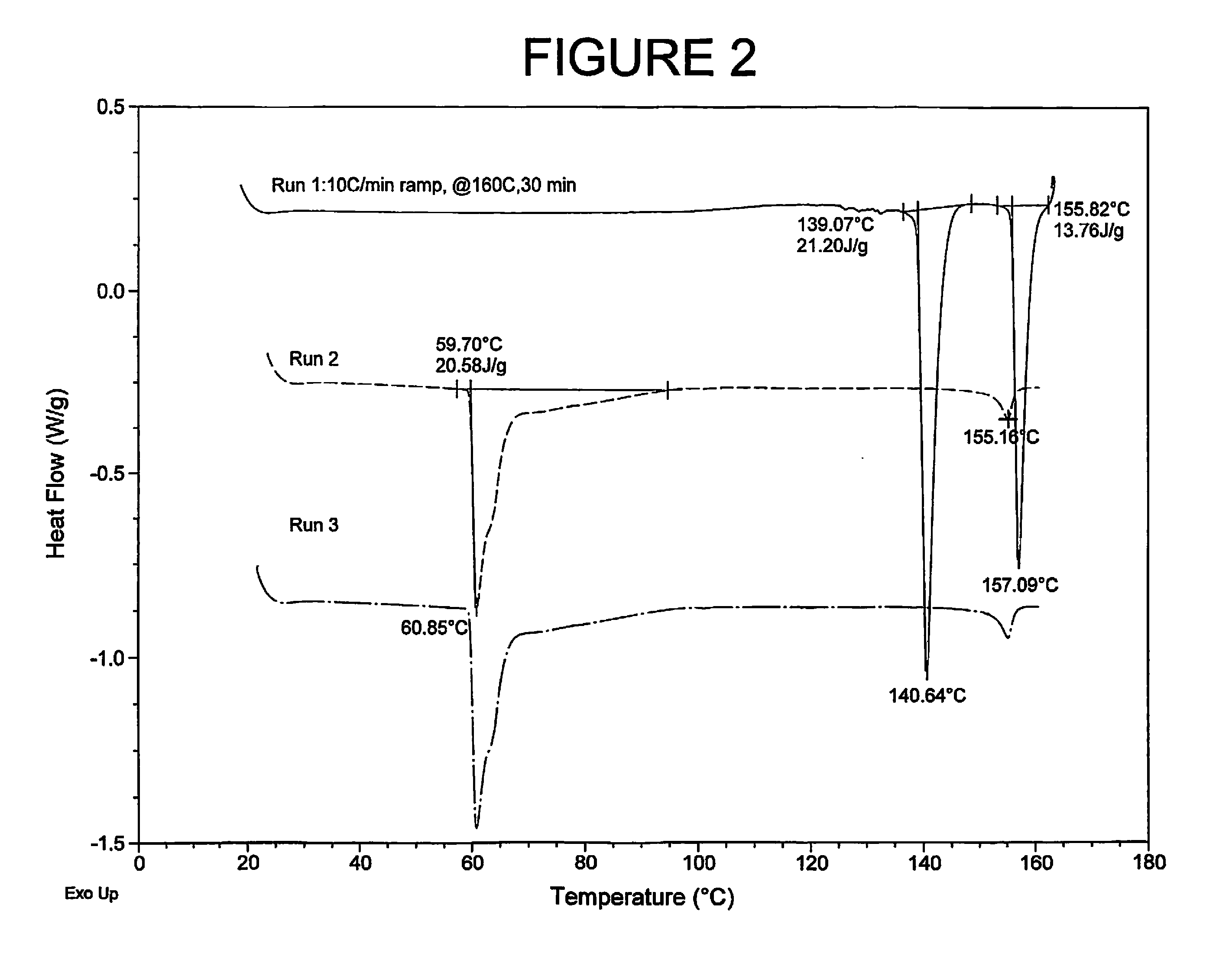Thermal Interface Material with Epoxidized Nutshell Oil
- Summary
- Abstract
- Description
- Claims
- Application Information
AI Technical Summary
Benefits of technology
Problems solved by technology
Method used
Image
Examples
examples
[0022]Compositions were prepared to contain the components in weight percent shown in the below Table. The inventive samples are identified as E, F, G, H, and J, and have viscosities suitable for dispensing. They all consist of a liquid reactive mixture of polymer resins and high melting point solder powders. Indium powder has a melting point of 158 C, and tin-bismuth alloy powder has a melting point of 138 C.
[0023]The TIM compositions were tested for thermal conductivity by measuring the resistance within a TIM composition disposed between a silicon die and a copper plank. The silicon die was heated and the heat input measured using a combination of a voltage and current meter. The heat traveled through the TIM to the copper plank, and the temperature on the copper plank was read by a thermocouple. Resistance was calculated from these values.
[0024]As the TIM material was subjected to the heat traveling from the heated silicon die to the copper plank, the epoxidized nutshell oil and...
PUM
| Property | Measurement | Unit |
|---|---|---|
| Percent by mass | aaaaa | aaaaa |
| Percent by mass | aaaaa | aaaaa |
| Weight | aaaaa | aaaaa |
Abstract
Description
Claims
Application Information
 Login to View More
Login to View More - R&D
- Intellectual Property
- Life Sciences
- Materials
- Tech Scout
- Unparalleled Data Quality
- Higher Quality Content
- 60% Fewer Hallucinations
Browse by: Latest US Patents, China's latest patents, Technical Efficacy Thesaurus, Application Domain, Technology Topic, Popular Technical Reports.
© 2025 PatSnap. All rights reserved.Legal|Privacy policy|Modern Slavery Act Transparency Statement|Sitemap|About US| Contact US: help@patsnap.com



